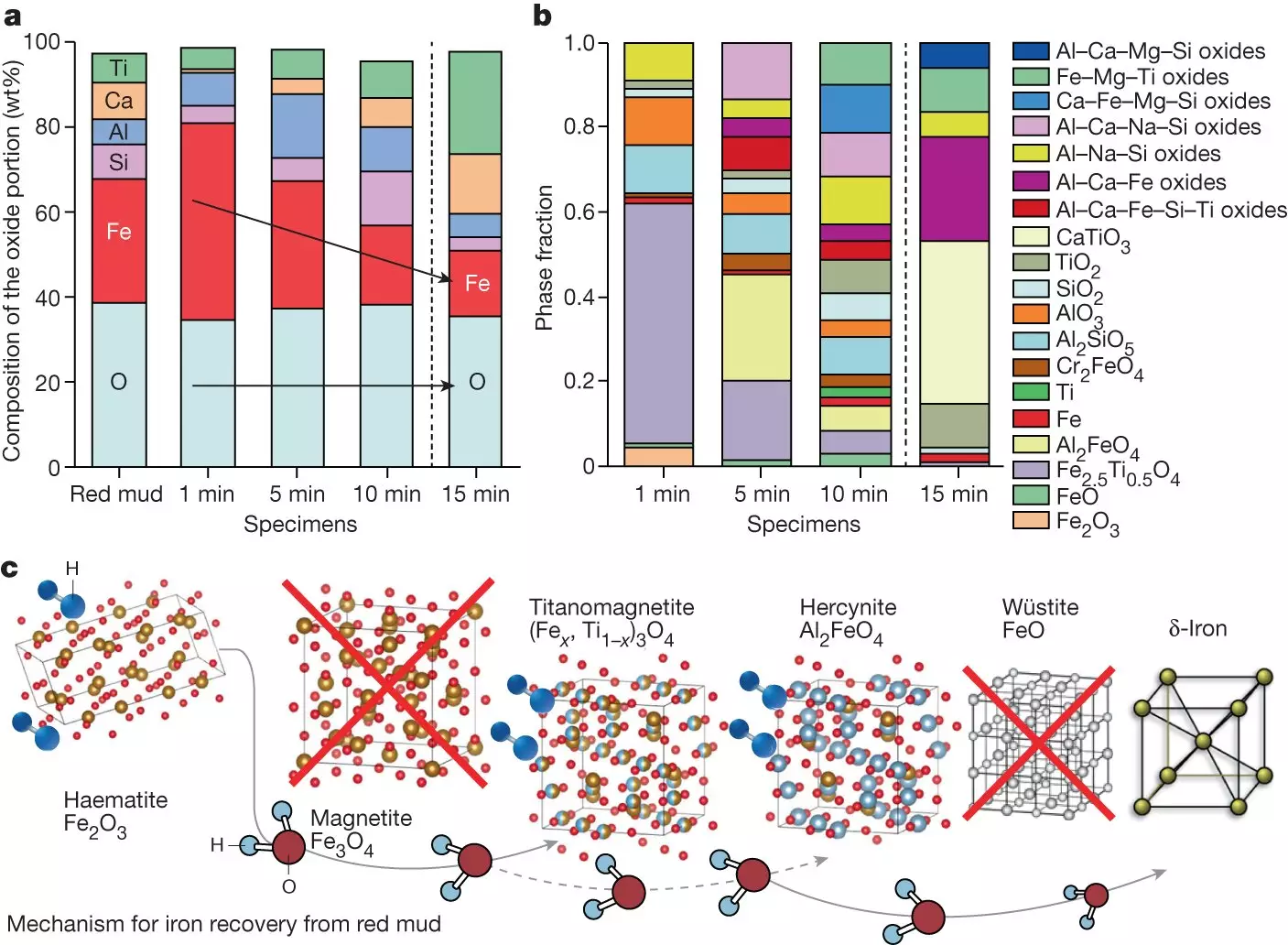The production of aluminum generates an astonishing 180 million tons of toxic red mud annually. This waste poses significant environmental challenges due to its high alkalinity and traces of heavy metals. However, scientists at the Max-Planck-Institut für Eisenforschung have made a groundbreaking discovery. They have developed a process that converts the iron oxide in red mud into iron, resulting in the production of CO2-free steel. This innovative method not only offers a solution to the waste problem of the aluminum industry but also has the potential to revolutionize the steel industry’s carbon footprint.
The demand for steel and aluminum is expected to increase by up to 60% by 2050. However, the conventional production of these metals has a detrimental impact on the environment. The steel industry alone is responsible for 8% of global CO2 emissions, making it the sector with the highest greenhouse gas emissions. On the other hand, the aluminum industry produces a staggering 180 million tons of red mud annually, which is disposed of in landfill sites at considerable processing costs. The red mud not only poses a threat when it washes out of landfills during heavy rain but also corrodes the landfill’s concrete walls, causing leaks that lead to environmental disasters.
The scientists at the Max-Planck-Institut für Eisenforschung have found an innovative way to utilize the red mud waste product. Through a process called plasma reduction, they convert the iron oxide in red mud into pure iron using an electric arc furnace and hydrogen plasma. This process only takes ten minutes, resulting in the separation of liquid iron from oxides, which can then be extracted easily. The iron obtained is of such high purity that it can be directly processed into steel. The remaining metal oxides solidify and can be utilized as a glass-like material for construction purposes.
Compared to other methods that use coke, the plasma reduction process yields iron that is less contaminated and significantly reduces CO2 emissions. By utilizing green hydrogen as a reducing agent, the process could potentially save 1.5 billion tons of CO2 if applied to the 4 billion tons of red mud produced globally. Moreover, this process also offers the opportunity to neutralize the heavy metals present in the red mud, with the possibility of separating and reusing valuable metals.
In addition to its environmental benefits, the plasma reduction process also proves to be economically viable. Cost analysis conducted by the research team reveals that if the red mud contains 50% iron oxide or more, the process becomes economically worthwhile. Even when considering the costs of red mud disposal, a minimum of 35% iron oxide content is sufficient to make the process economical. Considering the conservative estimates utilized in the cost analysis, the potential economic advantages of this method are significant.
One crucial advantage of this breakthrough is that it can be easily integrated into existing infrastructure. Electric arc furnaces, which are employed widely in the metal industry, including aluminum smelters, can be repurposed for this process. This means that minimal investments would be required for the industry to transition to this more sustainable method. As a result, the implementation of green steel production has the potential to be swift and efficient.
The development of green steel production from aluminum waste is a game-changer for both the aluminum and steel industries. The plasma reduction process offers a sustainable solution to the waste problem, as well as a significant reduction in greenhouse gas emissions. The economic viability and compatibility with existing infrastructure make the transition to green steel production feasible. This revolutionary method has the potential to reshape the steel industry’s carbon footprint and contribute to a more sustainable future.


Leave a Reply